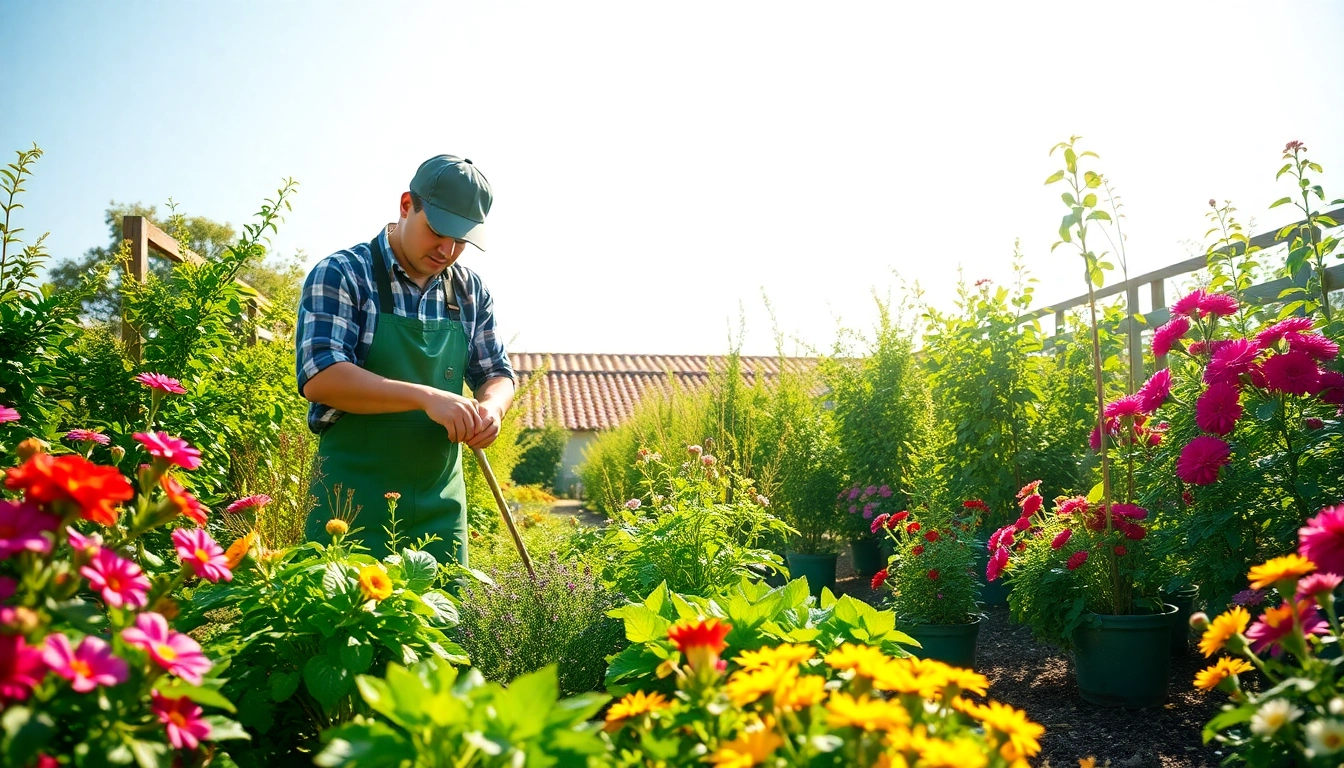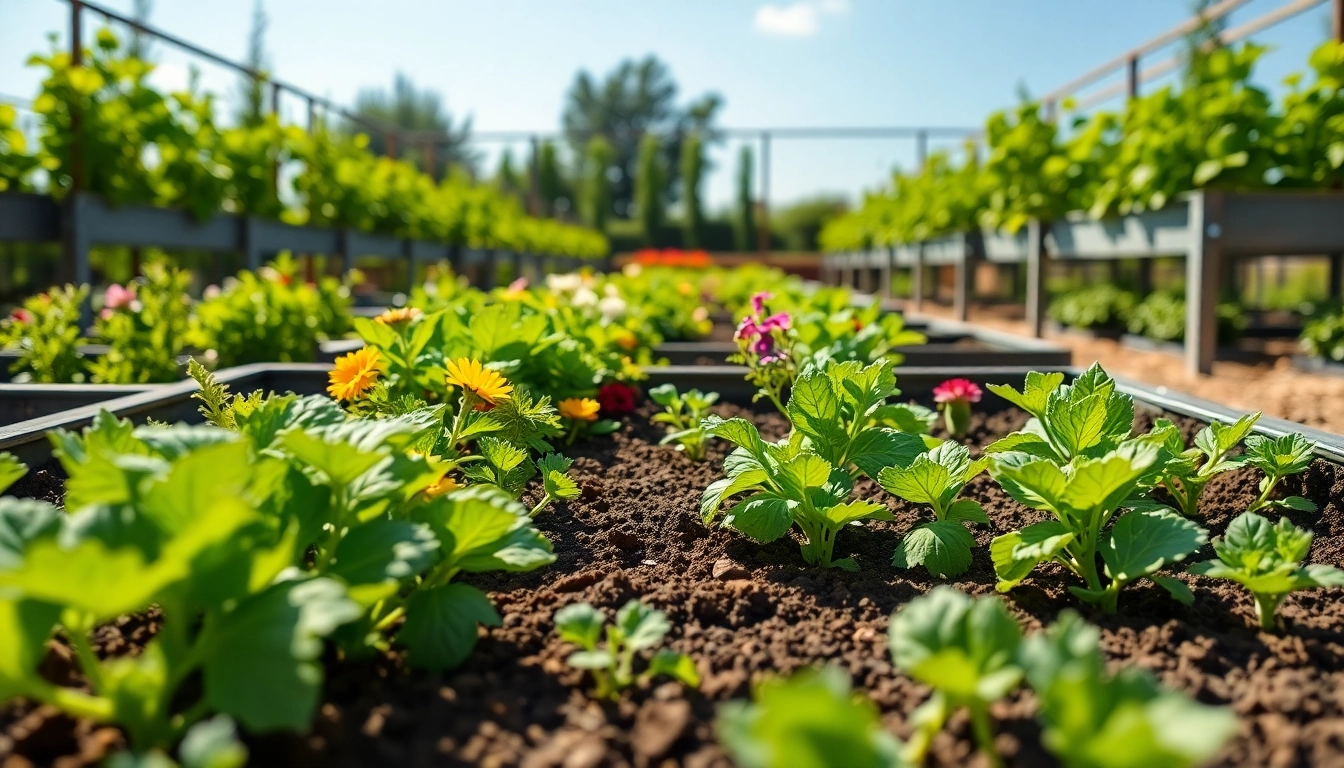Understanding Garden Maintenance Services
What is Garden Maintenance?
Garden maintenance encompasses a wide range of practices designed to keep outdoor spaces healthy, aesthetically pleasing, and functional throughout the seasons. This service goes beyond simple lawn care; it includes planting, pruning, mulching, weeding, pest control, and soil health management. Whether it’s a private backyard or a communal green space, garden maintenance services aim at fostering an environment where plants can thrive while offering a conducive space for recreation and relaxation.
Benefits of Regular Maintenance
Engaging in regular garden maintenance comes with numerous advantages. Primarily, a well-maintained garden promotes plant health, ensuring that flowers, shrubs, and trees grow to their full potential. This practice can also significantly increase property value—homes with beautifully manicured lawns and gardens are often more attractive to prospective buyers. Additionally, consistent upkeep can prevent common issues such as pest infestations and diseases, reducing the need for expensive interventions down the line. Moreover, a well-kept garden contributes to environmental sustainability by fostering biodiversity and encouraging a balanced ecosystem.
Common Services Offered
Garden maintenance services can vary widely depending on customer needs and local climate conditions. Some common offerings include:
- General Cleanup: Removal of debris, leaves, and dead plants to keep the garden tidy.
- Lawn Care: Regular mowing, edging, fertilization, and aeration to promote healthy grass growth.
- Pruning and Trimming: Shaping plants and trees to enhance their appearance and health.
- Weeding: Efficient removal of unwanted plants that compete for nutrients and space.
- Pest and Disease Control: Preventive measures and treatment to safeguard plant health.
- Soil Preparation: Enhancing soil quality through amendments and proper drainage.
For homeowners looking to engage a garden maintenance service, understanding the offerings is crucial for ensuring that their specific needs are met.
Essential Tools for Effective Garden Maintenance
Basic Tools Every Gardener Needs
Effective garden maintenance starts with the right tools. Every gardener should have a solid arsenal of basic tools, which include:
- Hand Tools: Trowels, pruners, and hand rakes are essential for small tasks and delicate work.
- Shovels and Spades: For digging, turning soil, and planting.
- Hoes: Ideal for weeding and breaking up compacted soil.
- Loppers: For cutting thicker branches that are difficult to manage with standard pruners.
- Shears: Perfect for trimming hedges and small bushes.
- Watering Can or Hose: Essential for plant care, especially in drier conditions.
Advanced Equipment for Optimal Care
For larger gardens and more complex landscape designs, advanced equipment becomes necessary. This includes:
- Rotary Tillers: For breaking up hard soil and mixing in a soil amendment.
- Lawn Mowers: A crucial machine for maintaining grass height.
- String Trimmers: Useful for edging and hard-to-reach areas.
- Leaf Blowers: To keep garden areas clean and free of leaves and debris.
Tool Maintenance for Longevity
Investing in quality tools is just the first step; proper maintenance is essential for ensuring longevity and effectiveness. Regularly clean tools after use, store them in a dry place, and occasionally sharpen blades to avoid rust and damage. Over time, these simple practices can save money and enhance the performance of gardening equipment significantly.
Best Practices for Garden Maintenance
Seasonal Maintenance Tips
Garden maintenance is largely shaped by the changing seasons. Here are some key maintenance practices to consider:
- Spring: This is the time for planting and rejuvenation. Focus on soil preparation, planting new flowers and vegetables, and mulching to retain moisture.
- Summer: Regular mowing, watering, and deadheading of flowers should be a focus to encourage blooming and growth.
- Fall: Prep gardens for winter by cutting back perennials, planting bulbs for spring blooms, and cleaning up debris to protect plants.
- Winter: While many gardens go dormant, this is an excellent time for tool maintenance and planning for the upcoming planting season.
Organic Techniques for Healthier Plants
Many gardeners now lean towards organic techniques to promote healthier plant growth. Some approaches include:
- Composting: Creating a nutrient-rich compost heap enriches soil health without using chemical fertilizers.
- Crop Rotation: Changing the types of plants grown in a particular area each season to prevent soil depletion and pest buildup.
- Natural Pest Control: Introducing beneficial insects or using neem oil and other natural products to deter pests without harming the environment.
How to Structure Your Maintenance Schedule
Creating a structured maintenance schedule is crucial for consistent care. Start by mapping out key tasks throughout the year based on seasonal changes and specific plant needs. Use gardening apps or a simple calendar to track when to check on plants, apply fertilizers, and conduct pruning. Consistency is that anchor which enables gardeners to manage their space successfully while fostering an environment for growth.
Choosing the Right Garden Maintenance Service
Factors to Consider When Hiring
Selecting an appropriate garden maintenance service can be daunting, but certain factors can help streamline the process:
- Experience: Look for services with a proven track record and years of experience in the field.
- Specialization: Some companies specialize in specific types of gardening—choose one that aligns with your needs; for instance, if you have a lot of native plants, seek services knowledgeable about local flora.
- Insurance and License: Ensure that the company is insured and licensed—this protects you and your property in case of accidents.
Questions to Ask Potential Providers
Before finalizing a service, consider the following questions:
- What specific services do you offer?
- Can you provide references or testimonials from past clients?
- What is your pricing structure?
- How do you handle pest control and diseases?
Evaluating Service Providers’ Reputation
In today’s digital age, checking online reviews and ratings is easier than ever. Use platforms like Yelp or Google Reviews to gauge customer satisfaction, and don’t hesitate to contact previous clients for a personal recommendation. A reputable service will have a strong online presence and will be able to demonstrate their successes through client stories.
Maximizing Your Garden’s Potential
Integrating Landscaping with Maintenance
Your garden’s aesthetic appeal can be amplified through the integration of landscaping elements with maintenance practices. Well-placed pathway stones, decorative plant borders, and strategic lighting can elevate the visual impact of your garden. Emphasizing such details will ensure that routine maintenance pairs seamlessly with these design elements, creating a coherent and engaging outdoor space.
Utilizing Professional Maintenance for Growth
Engaging professional garden maintenance services can significantly enhance growth, particularly in complex garden designs or larger spaces. Professionals can provide tailored strategies based on your specific flora and local climate, leading to healthier plants that flourish. Regular professional oversight not only keeps your garden looking its best but optimally supports plant health and growth through strategic interventions.
Tracking Performance and Improvements
To truly maximize your garden’s potential, it’s important to track growth and performance over time. Consider maintaining a garden journal where you can log seasonal changes, plant health, and maintenance tasks. This documentation will be invaluable for noticing patterns or issues that arise and refining maintenance practices accordingly. You can also create a digital record using apps that allow you to track plant growth and maintenance history efficiently.















Leave a Reply